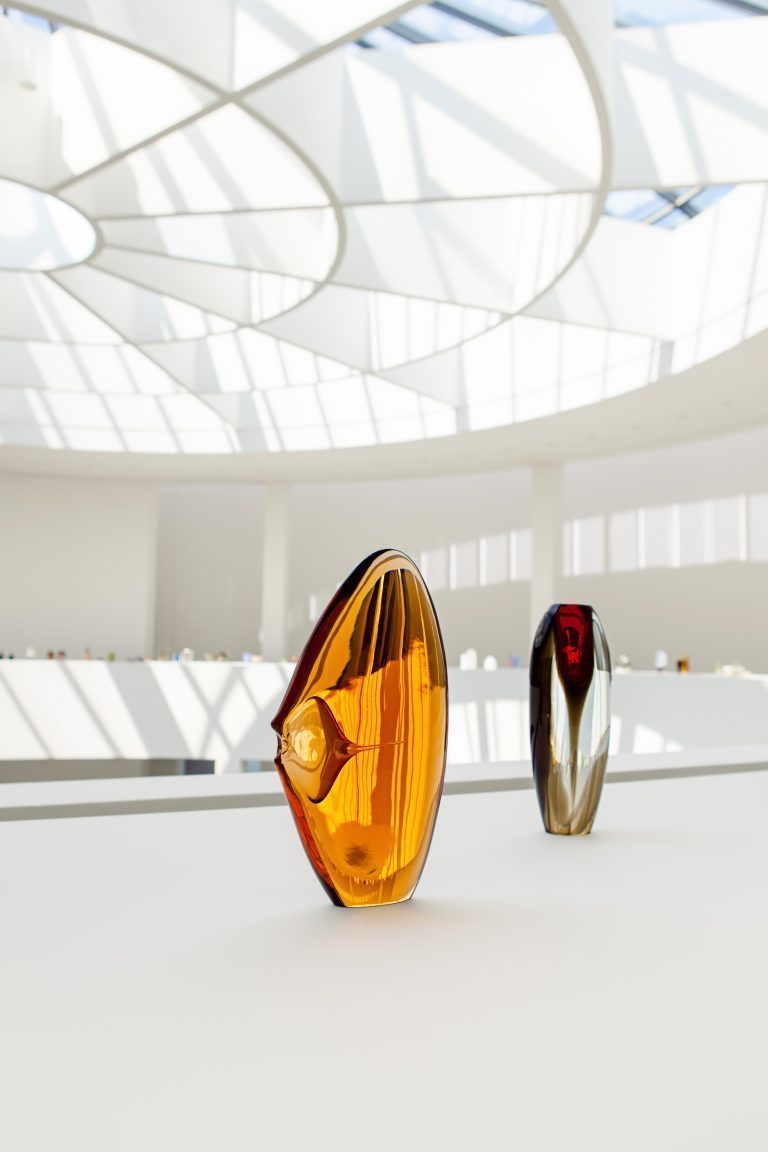Murano. Milano. Venezia. Glass
About the Exhibition
The Milan Triennale and the Venice Biennale were two international exhibitions in the 20th century serving as barometers of contemporary design and art. Less well known is the fact that Murano glass was also presented and gained high recognition there.
Glass factories like A.Ve.M., Archimede Seguso, Barovier & Toso or Venini rediscovered the centuries-old craft of glassmaking and its widely differing techniques and introduced a new interpretation of such glass. The extraordinary, unique pieces they created combined the skills of master glass-makers with designers’ artistic ideas. Such works from Murano continue to reflect a successful renewal in European glass design.
The exhibition by Die Neue Sammlung focuses on some 200 objects and corresponding drawings from the Holz Collection in Berlin, one of the world’s most important private collections of Murano glass. It is the first exhibition in the Pinakothek der Moderne to be devoted to this art of glass.
“Calice a spirale ”, an object from the Artisti Barovier factory, is one of the oldest pieces. The cup on a spiral-shaped base went on display during the very first Venice Biennale in 1895. While the glass objects realized prior to the First World War were typically designed by the factories themselves, from the 1920s on designers and artists were brought in to decide the shape and appearance of objects. Collaborating closely with the glass-makers enabled them to explore the creative and technical scope glass afforded. Indeed, opaque vessels by architect Carlo Scarpa inspired by Chinese vases stand for a new design idiom as championed by the Venini glass factory. The unusual designs by Ercole Barovier or the polychrome “Oriente” vases by painter Dino Martens attest to a great delight in experimentation during the 1950s. The popular “Pezzati”, masterminded by the versatile Fulvio Bianconi, or the sophisticated “Merletti” by Archimede Seguso, stand for excellent artistry and a complete mastery of technical challenges. Fratelli Toso were especially renowned for black glass designs. Influenced by Abstract Expressionism, the works by artist Luigi Scarpa Croce are rarely exhibited. The “Rotellato” pieces by Barovier & Toso demonstrate that in the 1960s glass objects were more colorful and decorative, while the shapes became more classical and plain. Finally, in the early 1970s large vessels and simple interlayer techniques produced spectacular results.
Among the few international designers represented in shows in Milan and Venice were the Swedish artist Tyra Lundgren, American sculptor Thomas Stearns or the two Swedish designers Birgitta Karlsson and Ove Thorssen. They all worked with Venini, one of the world’s most famous makers of Murano glass.
Thanks to an exhibition architecture especially conceived for the Rotunda of the Pinakothek der Moderne, the pieces from the Holz Collection, covering a creative span of 70 years, are presented in changing daylight. For the first time the exhibition shows a large selection of glasses, which not only set standards in Milan and Venice but also decisively influenced the international history of modern glass.
Plan your visit
Where?
Open:
Daily 1O a.m. – 6 p.m.
On Mondays closed
On Thursdays 1O a.m. – 8 a.m.

FAQs
regular 10 Euro
reduced admission 7 euros
Sunday admission 1 euro
Children and young people under the age of 18 have free admission.
We cooperate with Kulturraum München.
The design museum also offers an inclusive touch station in the X-D-E-P-O-T, which everyone can explore independently.
Curated by:
Dr. Xenia Riemann, Dr. Josef Strasser
Assistant curator: Nadine Engel